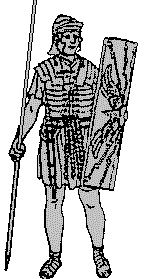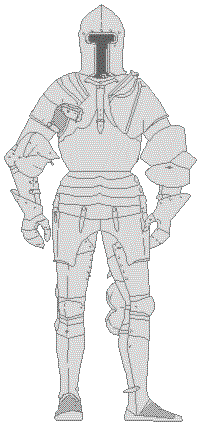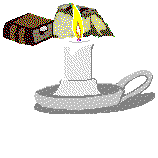Armour (also spelled "Armor", particularly in American English) is the protective clothing and equipment used to protect people and animals from intentionally inflicted harm in warfare and in civilian situations where they might otherwise come to harm such as during policing or for the protection of the possible targets of assassination. In in a modern military context, the term is also applied to armoured fighting vehicle and the formations based around them.
|
"Armour" is also used to describe various features which have been developed to afford protection to animals such as the tortoise, turtle or armadillo from attack by predators. The rigid exoskeletons of creatures such as insects and arthropods can also be considered as "Armour" from the point of view of the protection which they offer.
|
Beginning with hides, leather, bone and bamboo, and progressing to bronze, steel, ballistic cloth, ceramics, and depleted uranium, armour has been used since before recorded history.
Throughout human history, the development of weapons and armour have literally been an "arms race, with each development in weapons leading to attempts to offer better protection and subsequent attempts to defeat the improved protection attained.
|
In the popular imagination, armour is inextricably linked with the medieval Knight and his charger.
|
Armour manufactured from hides and quilted fabric to spread the energy of the impact of a weapon dates from the earliest of times. A great advance was made in the fifth century BC with the introduction of "chain mail" which offered good protection while being extremely flexible. It consisted of huge numbers of iron or steel rings, each linked through four of its neighbours. Worn over a quilted garment to prevent the iron rings from chaffing the skin, it offered a good defence against the cut or thrust of a sword or an arrow although it offered little protection from impacts such as those of an axe or mace.
The complete body armour of the medieval knight fell out of use in warfare by the late sixteenth century as firearms used by better-trained soldiers became more effective and rendered the armour obsolete in favour of mobility unecumbered by the additional weight - a lightly armed horseman could close more quickly with a muskateer and thus lessen the time period during which he was exposed to the risk of injury by enemy fire.
Open helmets and body armour continued in use with the pikemen of the infantry through most of the seventeenth century and with heavy cavalry into the Franco-Prussian war of 1870-1871.
By the 1870's, work had already began in the USA to develop body armour which would render protection to the wearer from modern firearms.


The ring of the chain mail could be burst open by an arrow and this led to the development of a barb-less arrow which tapered to a point which could more easily enter the link and burst it open. from the thirteenth century onwards, chain mail was reinforced with plates of hardened leather, iron or steel, all of which had seen long use for helmets and armour generally since antiquity.
To offer better protection from penetration and to lessen the bruising or breaking of bones by the blows of axes or maces, plate armour was employed either under or over the mail shirt. A later development was the protection of limbs with quilted fabric and the vulnerable limb-joints such as knees and elbows with saucer-shaped pices of armour.
The head became protected with a helmet manufactured from specially hardened leather or metal. The employment of helmets made it impossible to recognize the wearer on the battlefield and led to the development of a system of devices to enable identification which became known as "arms", the province of "heraldry".
Originally, the "devices" were painted onto either the side of the helmet or on a fan attached to its top, directly replacing the obscured face as a means of identification. Soon the devices appeared on a gown worn over the body armour, on the knight's shield, on the cloth coverture of the knight's steed and sometimes on banners when encamped. The Arms became hereditary, passing to the son on death or, more rarely if the knight died with no direct heir, to his son-in-law. The arms also became widely used as a badge or embem of the of the owner, often being employed in buildings and frequently met in churches.
During the fourteenth century, a great deal of carefull design was employed in the design of the armour so as to not merely provide a crude obstacle to weapons, but by shaping the plates to, and placing them at angles which would deflect the oponent's blow. The basinet (a form of helmet) for example, was rounded to deflect the weapon from the head while the pointed visor deflected blows from the face. Vision slits were placed at the top of ridges so that weapons were deflected from them and could only enter the helmet in the case of a direct hit.
By about the turn of the fifteenth century, the earlier chain mail had either been completely replaced by, or covered, by plate armour. The limbs had become enclosed in tubes of qulted material topped by tubes of metal while the joints were prtoected by narrow hinged plates of metal, arranged like the plates on the tail of a lobster. Chain mail was still used to protect those parts of the body, like the armpits, which could not be proteted by solid plates.
By the sixteenth century, battle armour (as distinct from that designed for use at the joust or tilt) had become reduced in weight to about 21 kg (50 lbs) allowing the wearer considerable freedom of movement, even enabling him to mount his horse with possibly only a mounting block as an aid.
|
Very little medieval armour from before the sixteenth century has survived into modern times although we can rely on many contemporary depictions of armour in paintings and sculpture. The effigies of medieval knights found on their tombs in many churches frequently depict them in their armour.
|
|
| | | Links to Other Pages on this Site
|
| |
| | |
|
| | | Links to Other Sites
|
| |
| | |
Recommend a Book for this Page
Hits on this page since December 6th| Jan | | | | | Feb | | | | | Mar | | | | | Apr | | | | | May | | |  | | Jun | | |  | | Jul | | | | | Aug | | | | | Sep | | | | | Oct | | | | | Nov | | | | | Dec | | |  |
current year:  | | previous year:  |
No messages posted on this page Only Members of the Site can post messages in this section. Signing in is easy from our Home Page. DISCLAIMER: Whilst we endeavour to ensure the content of this site is correct, we cannot undertake that information you find here, is, or will remain accurate and complete. We do not warrant that any information contained on this site is fit for any purpose. If you wish to place reliance on any such information you must check its accuracy by some other means before doing so. MEMBERS get aditional features on our pages and will soon be able to interact with the site and add their views and informastion. Sign up, from the Home-Page, is simple and involves typing in your email address and a password of your choice. If you are in any way connected with any location or interested in the subject mentioned on this page and have an hour or two a month to spare, we would welcome you as a local moderator - please email the webmaster by CLICKING HERE. Privacy Policy
|
| 







